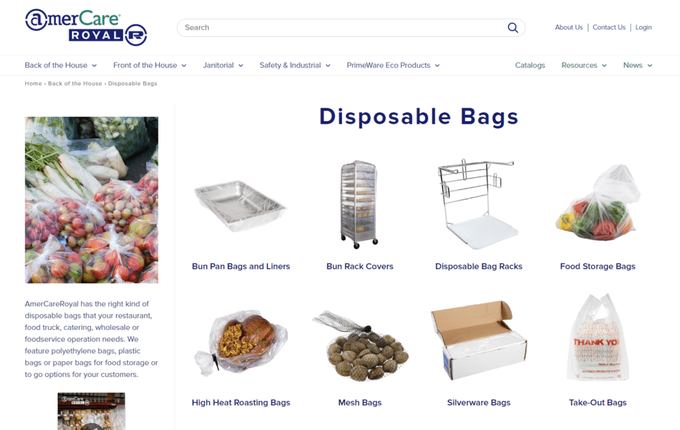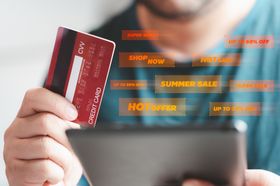6 Modern Strategies to Increase Conversion Rate: Beyond A/B Testing
Rising traffic but flat conversions? Break internal silos, implement AI-driven personalization, and move beyond A/B testing to transform your conversion rates.
Published October 4, 2025

The gap between traffic and conversions remains one of eCommerce's most expensive problems. While businesses master driving visitors to their sites, many struggle with understanding how to increase conversion rates and turn browsers into buyers. The traditional playbook of A/B testing button colors and tweaking headlines no longer delivers the breakthrough results needed to compete in a AI-driven marketplace.
The strategies that increase online sales today require sophisticated technology working behind the scenes to create seemingly effortless shopping journeys. In this blog, we'll explore the hidden blockers killing your conversion rate and reveal strategies that leading retailers use to transform their visitor-to-customer ratios.
» Find out how eCommerce personalization helps your business
The Traffic-Conversion Disconnect
Many eCommerce businesses face a frustrating paradox: rising traffic but flat conversions. The core issue stems from prioritizing visibility over buyer intent. While brands double their ad spend chasing more visitors, they miss the fundamental optimization opportunities right on their sites.
Did you know? A single second of delay in page load time can slash conversions by up to 20%. Yet businesses continue pouring money into traffic acquisition while ignoring these critical experience factors.
Breaking Down Internal Silos
Internal silos create invisible barriers to conversion optimization success. When marketing, IT, and UX teams operate in isolation, the customer experience suffers in predictable ways.
Marketing teams launch campaigns without coordinating with IT on technical requirements or load capacity. The result: landing pages that can't be tracked properly or updated in time for promotions.
The lack of shared KPIs compounds these problems. When high mobile bounce rates surface in the data, no single team owns the solution. Marketing blames the site experience, UX points to technical limitations, and IT cites resource constraints. Meanwhile, potential customers continue abandoning their carts.
Breaking these silos requires:
- Cross-functional CRO teams with unified goals
- Shared metrics that all departments track
- Regular alignment sessions before major campaigns
- Clear ownership of conversion optimization initiatives
» Learn more about personalization in online shopping and why it matters
Moving Beyond A/B Testing Limitations
While A/B testing remains a CRO staple, over-reliance on this methodology increasingly limits innovation potential. Forrester reports that 65% of digital leaders believe A/B testing alone no longer delivers breakthrough growth—and for good reason.
Brands spend months testing button colors and headline variations while competitors implement transformative changes like predictive search and intent-based personalization. The methodology's inherent limitations include:
- High traffic requirements for statistical significance
- Slow iteration cycles that delay innovation
- Narrow scope that misses systemic improvements
- Risk aversion that favors safe, minimal changes
» Learn more about personalization in online shopping and why it matters
Critical Metrics That Reveal Hidden Friction
- Session replay and scroll depth engagement: Raw click data tells only part of the story. Analyzing scroll patterns and hesitation points reveals where shoppers lose confidence or interest. When users consistently stop scrolling before product specifications, it indicates missing information or credibility gaps.
- Add-to-cart to checkout progression rate: This metric exposes the gap between product interest and purchase intent. If 40% of visitors add items to cart but only 10% proceed to checkout, the interest exists—but pricing transparency, shipping costs, or trust signals block the final commitment.
- Repeat visitor conversion lag: Measuring the number of visits before purchase reveals how hard the decision feels. If the lag is long, shoppers may be overwhelmed or not motivated enough to act.
» Find out how Fast Simon can help you boost conversions
6 Strategies for Boosting Conversion Rates
1. AI-Driven Category Page Personalization
This strategy uses artificial intelligence to dynamically reorganize product listings based on individual shopper behavior and real-time intent signals. Instead of showing static product grids to everyone, each visitor sees a customized arrangement.
Best fit for: Large-catalog retailers in fashion, electronics, and home décor with 500+ SKUs where product discovery is challenging.
» Not sure what to customize? Here are the elements you should personalize in your eCommerce store
Example: Steve Madden
Steve Madden implements Fast Simon's personalized merchandising to automatically surface trending footwear styles based on individual user preferences, achieving double-digit increases in product page clicks.
Common mistake and solution:
- Mistake: Applying universal ranking logic like "bestsellers" to all customer segments alienates niche shoppers with specific needs.
- Solution: Layer personalization with contextual rules based on seasonality, geographic location, and real-time inventory to maintain relevance for all segments.
» Here are more benefits of using AI in eCommerce personalization
2. Conversational Commerce via AI-Powered Search & Chat
Natural language processing transforms search functions, allowing shoppers to phrase queries conversationally like "affordable birthday gifts for teenage gamers."
Best fit for: Gift-oriented retailers in toys, cosmetics, and lifestyle products where purchase intent is often vague or exploratory.
Example: Mastermind Toys
Mastermind Toys leverages Fast Simon’s natural language and intent-based search to help customers find products even when they don’t know the exact name — like typing “lunchbox” instead of the brand “Coco Village Lunchbox.” This reduced search frustration, boosted conversions, and created a more personalized shopping experience across their large catalog.
Common mistake and solution:
- Mistake: Deploying generic chatbots that can't connect to real-time inventory frustrates users seeking specific products.
- Solution: Implement commerce-trained AI that directly integrates with product catalogs, inventory systems, and promotional calendars.
» Learn to effectively optimize your website content with natural language search
3. Trust Architecture (UX + Transparency Signals)
With data privacy concerns and rising CAC, conversion increasingly hinges on trust. Transparent delivery dates, sustainability badges, customer reviews, and clear return policies build reassurance. This affects the checkout funnel directly, reducing abandonment.
Best fit for: High-ticket retailers, luxury brands, and international sellers where purchase risk perception is elevated.
Example: Adore Me
Adore Me integrates sustainability icons and precise delivery estimates on product listing pages, building credibility before customers reach product details.
Common mistake and solution:
- Mistake: Cluttering pages with meaningless certifications and unverified badges dilutes authentic trust signals.
- Solution: Display only verified, relevant trust indicators that directly address documented customer concerns about security, authenticity, and fulfillment.
» Here are 5 sustainable eCommerce ideas
4. Dynamic Merchandising Based on Contextual Triggers
Dynamic merchandising adjusts product display in real time (e.g., weather, local demand). A footwear brand can push rain boots during storms. This strategy impacts mid-funnel discovery by making product relevance contextual.
Best fit for: Fashion retailers, sporting goods stores, and seasonal businesses where purchase decisions correlate with external conditions.
» See our best practices for seasonal eCommerce merchandising
Example: Ally Fashion
Ally Fashion uses Fast Simon’s flexible merchandising rules to balance automation with manual control across its large catalog. This allows them to dynamically reorder products within collections, pin featured items, and apply filters at scale.
The ability to combine contextual AI triggers with brand-driven manual rules gives them both efficiency and precision, leading to smoother product discovery and higher conversions.
Common mistake and solution:
- Mistake: Over-prioritizing temporary trends causes core evergreen products to lose visibility and reduces consistent revenue.
- Solution: Balance short-term boosts with long-term product value.
» Want to increase revenue even more? Check out how to maximize sales with search
5. AI-Optimized Bundling & Cross-Selling
Machine learning algorithms analyze purchase patterns to create dynamic product bundles, maximizing both value perception and profit margins. Unlike static "frequently bought together" suggestions, these systems predict complementary products based on individual shopping behavior and current cart contents.
Best fit for: Electronics, fashion, and beauty retailers where accessories and complementary products naturally enhance primary purchases.
Example: AmerCareRoyal
AmerCareRoyal, a leading B2B disposables supplier, uses Fast Simon’s advanced merchandising and recommendation engine. By combining SKU-driven search accuracy with AI-powered upsell and cross-sell, they deliver relevant product recommendations to wholesale buyers.
Common mistake and solution:
- Mistake: Creating static bundles that ignore inventory availability leads to frustrated customers and lost margin opportunities.
- Solution: Deploy dynamic bundling that considers real-time stock levels, profit margins, and individual customer value sensitivity.
» Unsure when it's best to cross-sell? Find out where in the conversion funnel you should cross-sell
6. Checkout Flow Micro-Optimizations with AI Predictions
Predictive models track checkout behavior and adjust the payment flow for each shopper. The system spots friction in real time. Hesitant first-timers may be offered guest or express checkout, while returning customers see faster wallet options. This adaptive approach eases last-minute doubts that often lead to cart abandonment.
Best fit for: High-volume retailers in electronics and fashion with diverse customer profiles ranging from impulse buyers to considered purchasers.
Example: BulbAmerica
BulbAmerica, a leading online lighting retailer, streamlined its checkout process by implementing express checkout options. By using AI to detect return customers and surface their preferred payment methods instantly, they removed friction in the final stage of the funnel.
Common mistake and solution:
- Mistake: Forcing all users through identical checkout flows ignores their history and behavioral signals that indicate preferences.
- Solution: Build adaptive checkout experiences that balance personalization with security compliance requirements like PCI and GDPR standards.
» Read more: How to ensure a smooth eCommerce checkout service
Beyond Purchases: Emerging AI-Driven Conversion Metrics
AI-driven optimization is pushing eCommerce beyond measuring just “purchase” as the ultimate conversion. New metrics capture pre-purchase intent and long-term value signals, including:
- Micro-conversions: These are smaller actions that indicate buying intent, such as adding items to favorites, creating wish lists, or clicking on AI-powered product recommendations. Tracking these helps you understand which products or features are capturing attention before a purchase occurs.
- Virtual try-ons / product interactions: By measuring how long shoppers use AR features, 3D previews, or product demos, businesses can see which products generate genuine interest. This shows engagement levels and helps predict which products are likely to convert.
- Assist-to-purchase attribution: This metric shows how AI tools like chat, search, and recommendations influence the path to checkout. It highlights which interactions are most effective at guiding shoppers toward completing a purchase.
» Here are 5 ways how personalized product recommendations can increase AOV
Ready to Transform Your Conversion Rate?
Your business doesn't need to accept industry-average conversion rates as the ceiling for growth. The strategies outlined above show how to increase online sales by addressing the real friction points in your customer journey—from internal silos to outdated optimization methods.
Fast Simon's AI-powered search and personalization tools provide the technical foundation to implement these conversion rate strategies at scale, whether you're reorganizing category pages based on individual preferences or creating conversational commerce experiences.
» Ready to get started? Get a demo of Fast Simon or consider these other AI solutions for eCommerce
FAQs
How can AI personalization improve my eCommerce sales?
AI personalization helps show the most relevant products to each shopper based on browsing history, intent, and real-time signals. This reduces decision fatigue, increases engagement, and boosts conversions across the mid-funnel.
How does dynamic merchandising work for my store?
Dynamic merchandising adjusts product displays in real time based on trends, local conditions, or shopper behavior. It increases relevance, surfacing trending or seasonal products when they matter most, which drives mid-funnel engagement.
How can AI optimize bundling, cross-selling, and checkout flows?
AI predicts complementary products for upsells and cross-sells, boosting average order value. In checkout, AI adapts flows for each user—offering guest checkout to new customers and express options to returning shoppers—reducing cart abandonment.












